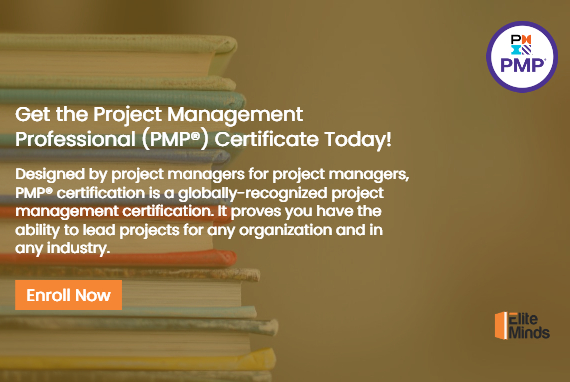
Project management processes organize and describe the work of the project. As per the Project Management Institute standards, there are five project management process groups used to accomplish this end. These processes are performed by people and are interrelated and dependent on one another. The 5 project management process groups as defined in the project management body of knowledge are: initiating, planning, executing, monitoring and controlling, and closing. In this blog, we will drill through these process groups, and understand the key activities that should be executed in each project process group.
What is a Project Management Process?
The project lifecycle is managed by executing a series of project management activities called project management processes. Each project management process will produce one or more outputs from one or more inputs by using appropriate tools and techniques. Project management processes are logically linked by the outputs they produce. The output of one process is generally results in either: An input to another process; or a deliverable of a project or project phase.
To build a house you need inputs (plans, specifications, permits, financing, building materials, etc.), then you proceed to construction by using tools and techniques (skilled labor and trades, concrete, framing, electrical, plumbing, finish work, etc.); when done, you have a house as your output.
An input can be defined as any item, whether internal or external to the project, that is required by a process before that process proceeds. May be an output from a predecessor process. Tools are something tangible, such as a template or software program, used in performing an activity to produce a product or result.
Technique is a defined systematic procedure employed by a human resource to perform an activity to produce a product or result or deliver a service, and that may employ one or more tools. An output can be defined as a product, result, or service generated by a process. May be an input to a successor process.
Process Groups in Project Management
A Project Management Process Group is a logical grouping of project management processes to achieve specific project objectives. Process Groups are independent of project phases. Project management processes are grouped into the following five Project Management Process Groups: initiating, planning, executing, monitoring and controlling, and closing.
All these process groups have individual processes that collectively make up the group. For example, the Initiating process group has two processes called Develop Project Charter and Identify Stakeholders. Collectively, these process groups—including all their individual processes—make up the project management process.
Projects, or each phase of a project, start with the Initiating process and progress through all the processes in the Planning process group, the Executing process group, and so on, until the project is successfully completed or it’s canceled. All projects must complete the Closing processes, even if a project is killed.
You shouldn’t confuse project phases and life cycles with the project management process groups. Project phases and life cycles describe how the work associated with the product of the project will be completed. For example, a construction project might have phases such as feasibility study, design, build, inspection, and turnover.
The 5 project management process groups (Initiating, Planning, Executing, Monitoring and Controlling, and Closing) organize and describe how the project activities will be conducted in order to meet the project requirements. These processes are generally performed for each phase of a large project.
Initiating
The Initiating process group, as its name implies, occurs at the beginning of the project and at the beginning of each project phase for large projects. Initiating acknowledges that a project, or the next project phase, should begin.
This process group grants the approval to commit the organization’s resources to working on the project or phase and authorizes the project manager to begin working on the project. The outputs of this process group include the project charter and identification of the stakeholders, becoming inputs into the Planning process group.
Planning
The Planning process group is the process of formulating and revising project goals and objectives and creating the project management plan that will be used to achieve the goals the project was undertaken to address.
The Planning process group also involves determining alternative courses of action and selecting from among the best of those to produce the project’s goals. This process group is where the project requirements are fleshed out. Planning has more processes than any of the other project management process groups.
Executing
The Executing process group involves putting the project management plan into action. It’s here that the project manager will coordinate and direct project resources to meet the objectives of the project management plan. The Executing processes keep the project on track and ensure that future execution of project plans stays in line with project objectives. This process group will utilize the most project time and resources, and as a result, costs are usually highest during the Executing processes. Project managers will experience the greatest conflicts over schedules in this cycle.
Monitoring and Controlling
The Monitoring and Controlling process group is where project performance measurements are taken and analyzed to determine whether the project is staying true to the project management plan. The idea is to identify problems as soon as possible and apply corrective action to control the work of the project and assure successful outcomes.
Closing
The Closing process group is probably the most often skipped process group in project management. Closing brings a formal, orderly end to the activities of a project phase or to the project itself. Once the project objectives have been met, most of us are ready to move on to the next project. However, Closing is important because all the project information is gathered and stored for future reference. The documentation collected during the Closing process group can be reviewed and used to avert potential problems on future projects. Contract closeout occurs here, and formal acceptance and approval are obtained from project stakeholders.
Characteristics of Process Groups
The progression through the project management process groups exhibits the same characteristics as progression through the project phases. That is, costs are lowest during the Initiating processes, and few team members are involved. Costs and staffing increase in the Executing process group and then decrease as you approach the Closing process group.
The chances for success are lowest during Initiating and highest during Closing. The chances for risks occurring are higher during Initiating, Planning, and Executing, but the impacts of risks are greater during the later processes. Stakeholders have the greatest influence during the Initiating and Planning processes and less and less influence as you progress through Executing, Monitoring and Controlling, and Closing.
Process Flows and Interactions
The project management process groups interact and overlap with each other. They are iterative and might be revisited and revised several times as the project is refined throughout its life. The conclusion of each process group allows the project manager and stakeholders to reexamine the business needs of the project and determine whether the project is satisfying those needs—and it is another opportunity to make a go or no-go decision.
The outputs of one project management process group may in some cases become the inputs into the next process group (or the outputs might be a deliverable of the project). Sometimes just understanding which process the question is asking about will help you determine the answer. This is an old-fashioned remedy for accidental poisoning that is no longer used today.
Project managers must determine the processes that are appropriate for effectively managing a project based on the complexity and scope of the project, available resources, budget, and so on. As the project progresses, the project management processes might be revisited and revised to update the project management plan as more information becomes known.
Underlying the concept that process groups are iterative is a cycle known as the Plan-Do-Check-Act cycle, which was originally defined by Walter Shewhart and later modified by Edward Deming. The idea behind this concept is that each element in the cycle is results oriented.
The results from the Plan cycle become inputs into the Do cycle, and so on, much like the way the project management process groups interact. The cycle interactions can be mapped to work with the five project management process groups. For example, the Plan cycle maps to the Planning process group.
At the end, the overall process of project management may include managing a project using the five project process groups that are highly interactive, these process groups are initiating, planning, executing, monitoring and controlling, and closing.
One of the most important aspects of understanding project management process groups is that while they are mainly classified as going in sequence, in reality, there is a lot of overlap between the process groups at any given point in time. It is true that project management may occur in a certain order, but at the same time project management is very dynamic, which means that managing a project is not linear.




.jpg)




.jpg)
.jpg)